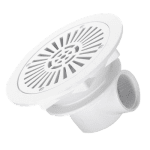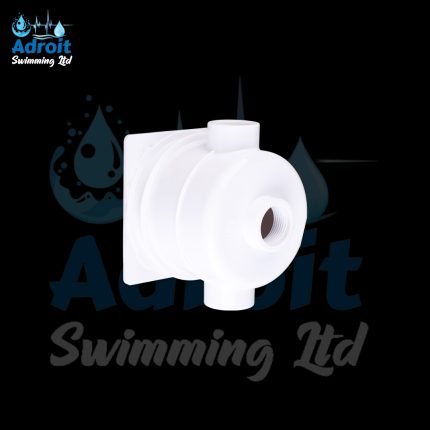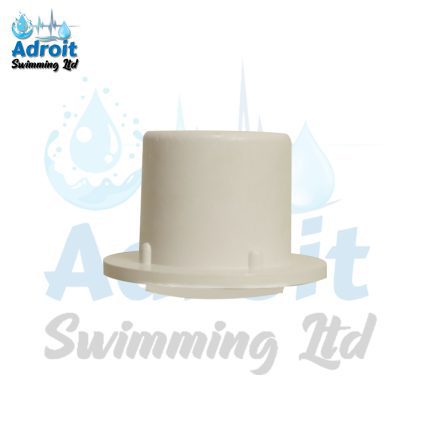Junction Box
A junction box for swimming pools is a crucial safety component that houses electrical connections for pool lighting, pumps, and other equipment. Designed to withstand outdoor conditions, these boxes are typically made from durable, weather-resistant materials like PVC or metal. They provide a secure enclosure for wiring, protecting it from water, debris, and corrosion. Junction boxes facilitate easy access to electrical connections, simplifying maintenance and repairs while ensuring compliance with electrical codes. Many junction boxes come with built-in strain relief and sealing grommets to prevent moisture ingress. Overall, a reliable junction box is essential for maintaining safe and efficient electrical operations in swimming pool installations.
Swimming Pool Junction Boxes: Ensuring Safe Electrical Connections
A swimming pool junction box is an essential component in the electrical system of a pool, designed to house and protect electrical connections that power various equipment, such as lighting, pumps, heaters, and filtration systems. These boxes are crucial for maintaining safety and efficiency in aquatic environments. This article will delve into the purpose, features, installation, benefits, and maintenance of swimming pool junction boxes.Purpose of Swimming Pool Junction Boxes
The primary function of a swimming pool junction box is to provide a secure and accessible location for electrical connections. These boxes serve several important purposes:- Protection of Connections: Junction boxes shield electrical connections from water, moisture, and physical damage. This is particularly vital in pool environments, where exposure to water can lead to corrosion or short circuits.
- Organization of Wiring: Junction boxes help organize the wiring associated with pool equipment, making it easier to manage electrical connections. By centralizing connections, maintenance and troubleshooting become more straightforward.
- Safety Compliance: Using a junction box is often required by local electrical codes and regulations. Properly installed junction boxes ensure compliance with safety standards, reducing the risk of electrical hazards.
- Ease of Access: Junction boxes provide easy access to electrical connections for maintenance, repairs, and upgrades. This accessibility simplifies the process of checking wiring and making necessary adjustments.
Features of Swimming Pool Junction Boxes
- Weatherproof Design: Junction boxes designed for pool applications are typically weatherproof and resistant to moisture and UV exposure. They are constructed from durable materials, such as PVC or fiberglass, to withstand harsh environmental conditions.
- Sealed Enclosures: Most pool junction boxes feature sealed enclosures to prevent water ingress. Gasket seals or compression fittings help ensure that the interior remains dry, protecting electrical connections from moisture.
- Cable Entry Points: Junction boxes often come with multiple entry points for electrical cables, allowing for flexible installation options. These entry points are designed to be watertight, maintaining the integrity of the box.
- Mounting Options: Swimming pool junction boxes can be mounted in various locations, including on walls, decks, or underground. The mounting options are designed for secure installation, ensuring stability and safety.
- Size Variability: Junction boxes are available in various sizes to accommodate different numbers of connections and wiring configurations. Choosing the appropriate size is important for effective organization and management of electrical components.
Installation of Swimming Pool Junction Boxes
Installing a swimming pool junction box requires careful planning and adherence to safety codes. Here are the steps typically involved in the installation process:- Planning and Location: Determine the ideal location for the junction box, considering proximity to pool equipment and accessibility for maintenance. The site should be dry and away from direct exposure to water.
- Preparing the Area: Clear the installation area of debris and ensure that it is level. If the junction box will be mounted on a wall, use appropriate anchors or brackets for secure attachment.
- Wiring Connections: Before installing the box, prepare the electrical wiring. Strip the insulation from the ends of the wires and connect them according to the manufacturer's instructions, using wire nuts or other approved connectors.
- Securing the Junction Box: Mount the junction box securely in the chosen location. Ensure that all entry points for cables are sealed properly to prevent water ingress.
- Testing Connections: Once the junction box is installed and wired, turn on the power to the pool equipment and test the connections. Verify that all electrical components are functioning properly and that there are no signs of shorts or malfunctions.
Benefits of Swimming Pool Junction Boxes
- Enhanced Safety: The use of junction boxes significantly reduces the risk of electrical hazards associated with pool equipment. By protecting connections from moisture and physical damage, they help prevent electrical shocks and fires.
- Simplified Maintenance: With organized and accessible wiring, maintenance tasks are easier to perform. Pool technicians can quickly locate and address issues without having to sift through tangled wiring or make unnecessary disconnections.
- Longevity of Equipment: Properly housed electrical connections contribute to the longevity of pool equipment. By reducing exposure to environmental elements, junction boxes help prolong the life of electrical components, saving costs on repairs and replacements.
- Compliance with Regulations: Using a junction box ensures that electrical installations meet local safety codes and regulations. This compliance is essential for both safety and liability reasons, particularly in commercial pool settings.
- Flexibility for Upgrades: Junction boxes provide a central point for making upgrades or changes to electrical systems. Whether adding new lighting, pumps, or other equipment, junction boxes facilitate easy integration without extensive rewiring.
Maintenance of Swimming Pool Junction Boxes
- Regular Inspections: Periodically check the junction box for signs of wear, damage, or corrosion. Ensure that the seals are intact and that there are no visible signs of water ingress.
- Cleaning: Keep the exterior of the junction box clean and free from debris. This not only improves aesthetics but also allows for easier monitoring of its condition.
- Tightening Connections: Over time, connections may loosen. Periodically check and tighten wire connections as needed to ensure reliable electrical performance.
- Replacement of Damaged Components: If any parts of the junction box are damaged or compromised, replace them promptly to maintain safety and functionality.
- Consulting Professionals: For any electrical work or concerns, it’s advisable to consult a licensed electrician. Professional assistance ensures compliance with safety standards and the proper functioning of electrical systems.





















